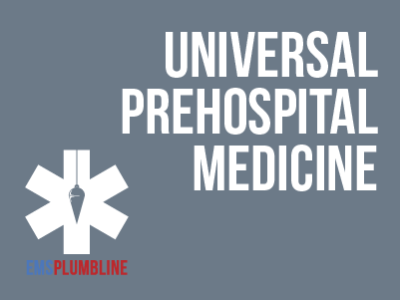 |
End-of-Life Care (Part 1): Introduction—Palliative Care |
1.00 |
Nursing educator Dr. Jacqueline Coates, DNP, MS, RN, FNP-C, is a retired paramedic who brings her experiences in prehospital medicine and hospice to this introductory lesson in palliative care. The series begins by discussing the concepts of hospice and palliative care. Her expertise and teaching acumen provide several opportunities for you and your team to expound upon the principles she introduces.
The multiple-choice exam is designed to test your knowledge of the material you just reviewed. You have two attempts to gain an 80% or higher on this exam. Please take your time and answer each question carefully. |
 |
NYS MOLST Training |
1.50 |
The New York State Medical Orders for Life Sustaining Treatment (MOLST) form contains medical orders that EMS must honor in critically ill and frail patients. In order to honor patient wishes at the end of life, it is essential that EMS clinicians are able to rapidly interpret MOLST forms and honor the orders. In 2023, DOH policy was updated to align with an updated MOLST form and to allow the recognition of health care agents by EMS without online medical oversight. This training reviews the legal roles of health care agents, discusses the purpose of the MOLST form, how to interpret orders and reviews five scenarios that will give you the confidence to interpret and honor MOLST orders when it matters most. |
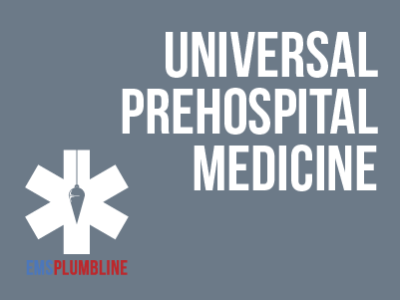 |
Scene Safety Series: Part 1—Emotionally Disturbed Persons |
1.50 |
Emotionally Disturbed Persons (EDPs) is a term that covers a wide range of situations. Although the responses are frequent, some become dangerous. Psychology professor Drew Anderson and Law Enforcement Officer/EMT Instructor James Walker provide expert commentary supported by a cast of experienced prehospital providers. Final Exam: This multiple choice exam is designed to test your knowledge of the material you just reviewed. You have two attempts to gain an 70% or higher on this exam. |
 |
Supporting Social Awareness and Interpersonal Skills for Paraprofessionals |
0.75 |
This course is designed to empower paraprofessionals with the knowledge and practical strategies needed to effectively support social awareness and interpersonal skills in students. Participants will explore the importance of social awareness and interpersonal skills, learn about key concepts, and gain actionable techniques to create a positive and inclusive learning environment that fosters emotional well-being and ethical growth in students. |
 |
Para-Educator Teaching Team |
1.50 |
This course is designed for both paraprofessionals and teachers. Throughout this course, you will acquire the skills and knowledge necessary to foster a collaborative environment that enhances the learning experience for your students. The goal of this course is to ensure every child is supported by a cohesive team of professionals striving to help the child find success in their education. This course will help you develop new knowledge about your student's team members and will help you understand what your role as a paraprofessional or teacher is. |
 |
Prehospital Tracheostomy Care for the BLS Provider |
1.00 |
One of the most intimidating events for a BLS provider is the 911 call for a pediatric patient with a difficult airway. Dr. Christopher Harmon and Paramedic Kuo Downing Reese discuss the challenging topic of the emergent airway and tracheostomy management in the prehospital setting.
Final Exam: This multiple-choice exam is designed to test your knowledge of the material you just reviewed. You have two attempts to gain an 80% or higher on this exam. Please take your time and answer each question carefully. |
 |
Building Upward—Primary Assessment |
1.00 |
Course Description: It is often said that experience is the best teacher. Dr. Jack Davidoff is an experienced EMS Medical Director. Paramedic Jason Haag is an experienced fire and EMS provider. The two of them share a few thoughts that prove to be an excellent review of what should and could be done during a standard primary assessment and more. Final Exam: A score of 80% or higher is required to obtain your certificate. You have two attempts to pass this multiple-choice exam. Please take your time to carefully answer each question. |
 |
Asthma Explained for the BLS Provider |
1.50 |
Briefly review some of the most basic concepts of caring for a patient who is suffering from an asthma attack. Final Exam: This multiple-choice exam is designed to test your knowledge of the material you just reviewed. You have two attempts to gain an 80% or higher on this exam. Please take your time and answer each question carefully. |
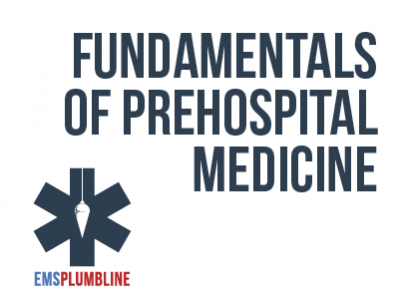 |
Stroke—Overview for BLS Providers |
1.00 |
It is always a benefit to be able to speak with an experienced paramedic and gain their opinions on pre-hospital care. Medical Director, Jeremy Cushman, puts on his paramedic hat and offers opinions on one of the most time sensitive emergencies that we see in the pre-hospital setting. Join us in a discussion that defines Stroke and discusses why recognition, communication, treatment, and transport is so vital to our patients' success. Final Exam: This multiple-choice exam is designed to test your knowledge of the material you just reviewed. You have two attempts to gain an 80% or higher on this exam. Please take your time and answer each question carefully. |
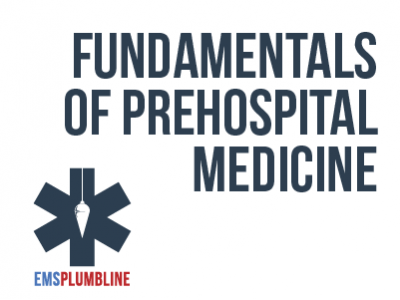 |
Assessing the Elderly—Dementia vs. Delirium |
0.50 |
One of the most common challenges that EMS crews face when assessing elderly patients is to differentiate between dementia and delirium. This brief review will allow providers the opportunity to assess their knowledge of the topic. The lesson concludes with a few challenging exam questions that will be fuel for good discussion within your agency.
Final Exam: This multiple-choice exam is designed to test your knowledge of the material you just reviewed. You have two attempts to gain an 80% or higher on this exam. Please take your time and answer each question carefully. |
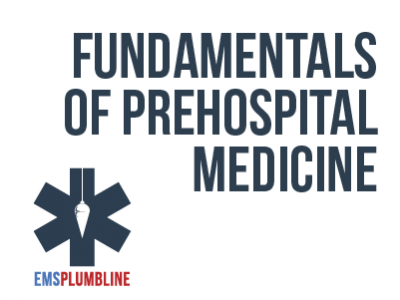 |
Building Upward: BLS Diabetes Discussions |
2.00 |
We captured an engaging discussion between a retired ALS provider and a system medical director. Michelle Cerone and Dr. Jeremy Cushman spoke about the topic of diabetes. Refreshing BLS providers can use the information from the discussion and the scenarios that were built following its conclusion to meet minimum competencies and more.
Final Exam: This multiple-choice exam is designed to test your knowledge of the material you just reviewed. You have two attempts to gain an 75% or higher on this exam. Please take your time and answer each question carefully. |
 |
Supporting Growth Mindset and Self-Efficacy for Paraprofessionals |
1.00 |
This course equips paraprofessionals with the essential knowledge and practical strategies to support student development of a growth mindset and self-efficacy. Participants will explore the foundational concepts of growth mindset and self-efficacy, understanding how these psychological constructs influence student learning and motivation. By the end of the course, paraprofessionals will be well-prepared to empower students to approach challenges with confidence, view mistakes as opportunities for growth, and develop a love for learning. This knowledge and skill set will enable them to make a significant impact on student's academic success and personal development. |
 |
Pain Self Management |
1.00 |
Many older adults suffer from pain that is so bothersome it interferes with their daily activities. Often the pain is chronic, sometimes persisting for many months or even years, and is associated with depression, isolation, and decreased quality of life. This program covers five techniques that can be helpful in taking the edge off of pain to improve life quality. While this presentation is designed for home health aides, nursing assistants, and personal care aides, any member of the care team (including families!) can help older adults learn these strategies to help control their pain.
Presenter Katherine Beissner is Professor of Physical Therapy, and Gerontology Institute Fellow at Ithaca College. Her primary clinical interest is the improvement of function in older adults. Recent research has focused on the impact of using pain self-management strategies on the function, activity level, and quality of life of older adults. |
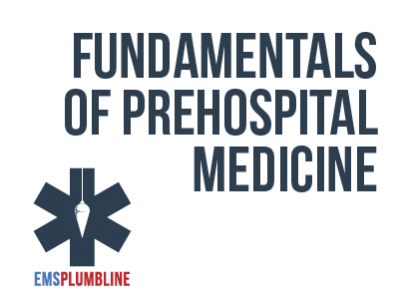 |
Building Upward: Resuscitation of Anaphylactic Shock Part 1—Overview |
1.00 |
Retired ALS provider, Michelle Cerone, speaks with Dr. Jeremy Cushman about the recognition and treatment of anaphylactic shock. This discussion gives the BLS provider the opportunity to compare allergic reactions to the life-threatening condition that requires rapid intervention. Final Exam: Please read each question carefully. You will have two attempts to gain a 70% or higher on this exam. If you are not successful in two attempts, you are welcome to take the course again to gain the certification. |
 |
Building Upward: Resuscitation of Anaphylactic Shock Part 3—Scenario 2 |
1.00 |
In this second of three scenarios, we discuss the transport decisions that should be considered when dealing with the potential of a medical illness and a traumatic injury. Vanessa and Medical Director Dr. Jeremy Cushman discuss a patient who has a motorcycle accident that was caused by a beesting. This exciting discussion will effectuate a review of the minimum competencies of medical and trauma care at the EMT level. Final Exam: Please read each question carefully. You will have two attempts to gain a 70% or higher on this exam. If you are not successful in two attempts, you are welcome to take the course again to gain the certification. |
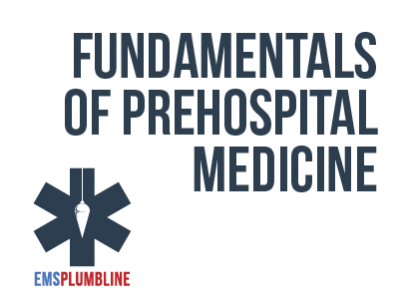 |
Building Upward: Resuscitation of Anaphylactic Shock Part 2—Scenario 1 |
1.00 |
The second part of this series is the first of three scenarios. All three scenarios are designed to review complicated situations that BLS providers may be asked to navigate. This scenario has us consider the care of an anaphylactic patient in the setting of a pregnancy. Paramedic student Vanessa Petote does an excellent job of interviewing Dr. Jeremy Cushman. Final Exam: Please read each question carefully. You will have two attempts to gain a 70% or higher on this exam. If you are not successful in two attempts, you are welcome to take the course again to gain the certification. |
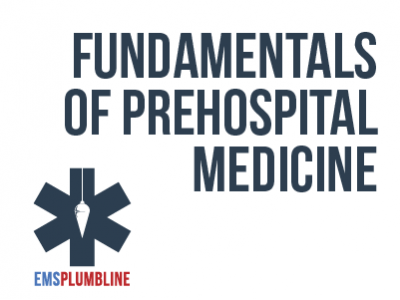 |
Building Upward: Resuscitation of Anaphylactic Shock Part 4—Scenario 3 |
1.00 |
This scenario involves a patient with special needs who has developed angioedema. Paramedic student Vanessa Petote and Medical Director Dr. Jeremy Cushman speak about the care that a special needs patient must receive, as well as the specific challenges that accompany a patient with a potentially unstable airway. Final Exam: Please read each question carefully. You will have two attempts to gain a 70% or higher on this exam. If you are not successful in two attempts, you are welcome to take the course again to gain the certification. |
 |
Concreting: Assessing the Elderly—Respiratory |
1.00 |
One of the most common responses for EMS providers is the chief complaint of shortness of breath (SOB). In this session, we discuss the challenges of obtaining a history of present illness (HPI) in a patient that potentially has one of three significant differentials: COPD, pulmonary embolism, or pneumonia. We will also briefly discuss what a BLS provider should do when preparing these patients for ALS level care. Final Exam: This multiple choice exam is designed to test your knowledge of the material you just reviewed. You have two attempts to gain an 80% or higher on this exam. Please take your time and answer each question carefully. |
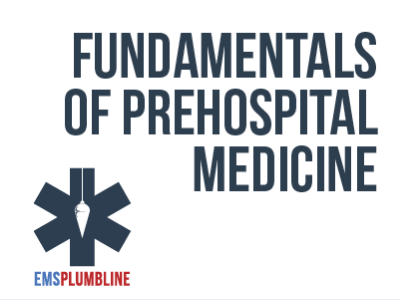 |
Brick by Brick: Assessing the Elderly—Female Cardiac Patient |
1.00 |
We know that there are unique challenges when assessing elderly patients. BLS providers also encounter unique challenges when assessing females for potential cardiac problems. This lesson briefly reviews the BLS assessment skills that are required for both populations. The introduction of 12-lead ECG acquisition gives the BLS provider a chance to orient themselves to the skills necessary when working in a system that requires recording and/or transmission of such tracings. The multiple choice exam is designed to test your knowledge of the material you just reviewed. You have two attempts to gain an 75% or higher on this exam. Please take your time and answer each question carefully. |
 |
Supporting Self-Awareness and Self-Management for Paraprofessionals |
0.75 |
This online course is designed to empower paraprofessionals with the knowledge and practical strategies needed to effectively support self-awareness and self-management in students. Participants will explore the importance of self-awareness and self-management, learn about key concepts, and gain actionable techniques to create a positive and inclusive learning environment that fosters emotional well-being and ethical growth in students. |
 |
Contentious Relationships |
1.50 |
This course will provide the foundation for maintaining healthy romantic relationships. It will also allow you to reflect on past and current relationships and identify why they failed. Finally, it will give you the skills to recognize red flags in potential love interests and within yourself. This course will teach you to minimize the effects of contentious relationships on your life, as well as on the lives of your children. |
 |
Sepsis - What's new in caring for these patients? |
0.75 |
A comprehensive update provided for an intended audience of prehospital care providers. This update introduces new definitions for sepsis and septic shock, reviews sepsis epidemiology, pathophysiology, disease morbidity and mortality, and prehospital treatments. |
 |
Chest Pain - Beyond MONA |
1.00 |
A review of atypical etiologies for chest pain, provided for an intended audience of prehospital care providers. This course refreshes physiology and pathophysiology for various cardiac and non-cardiac causes of chest pain, including definitions, disease morbidity and mortality, and prehospital treatments.
This training is primarily designed to assist paramedic providers as they care for patients in the prehospital environment |
 |
Differentiating Dyspnea |
1.00 |
|
 |
ALS Airway Response - Part One |
1.00 |
This conversation with Dr. Christopher Galton turns into a lesson that any paramedic (no matter what their background) will find beneficial in their attempt(s) to improve their Airway Skills. Dr. Galton, leads this discussion by bringing together his experiences in the pre-hospital arena, the emergency department, the ICU, the operating room, and beyond. Pull out a pen and paper and get ready to write down talking points that you will undoubtedly debate with fellow paramedics. You have two attempts to gain a 70% or higher on the exam. Take your time and good luck! |


























